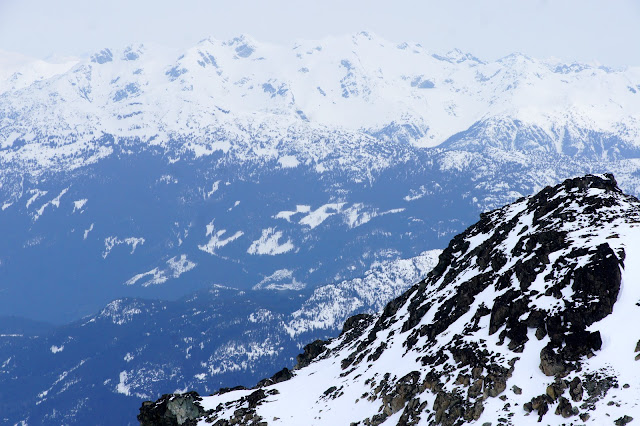Another nice day yesterday until the next weather system decided to move in.
Back to winter conditions in the Alpine this week with a few breaks, warmer tomorrow but cooler as the week progresses. This week will not be a repeat of last week.
I know I have been talking about spring conditions but the snow pack has not yet gone isothermal in the alpine.
Spring Hazards
Full spring conditions typically consist of an isothermal snowpack - One which is at 0 Deg C throughout. The surface will refreeze overnight, and as it softens in the sun good "corn" snow makes great skiing. The hazard tends to follow a daily cycle of low in the morning and moderate in the afternoon. After softening too much wet slides can release, often starting as point releases and growing. A good rule of thumb is to head home when you start to sink to your boot tops.
Another hazard to keep in mind is that before softening up the snow can be icy and a fall can be dangerous.
Large wet slides can be a hazard in the early spring, typically for a period of a few days when the snowpack first becomes isothermal. One reason for this is that free water can be introduced to snowpack too quickly if rapid warming occurs, especially if refreezing overnight does not occur. Initially this free water can flow along and lubricate buried bed surfaces, leading to wet slab releases. The effect of free water in the snowpack can be very difficult to predict. Ultimately, the free water and the melt-freeze process will hinder fracture propagation and break down the layering in the snowpack. After isothermal conditions prevail for a while the hazard of wet slabs becomes small.
At 2280 meters as of 06:00 the temperature was -5, winds were 15-30 KPH from the SSE.
At 1550 meters the temperature was -2, 98% relative humidity and the barometer is falling.
1 cm of snow fell there last night by 06:00.
It is +3 in the valley.
The snow will continue through the day and winds should pick up in the alpine.
For the updated Avalanche Advisory click here: Avalanche Advisory
Update on Avalanche in Kashmir Area: Siachen Glacier
North Face helping educate: Know Boundaries
Snow Bridge collapse: Valle Blanche
Avalanche Awareness and Mountain Snowmobiling survey: Great Prize for completing
The ice is almost gone off Alta Lake. The warm valley temperatures in the past few days melted a lot of snow and ice.
April 15 Th 2012, north facing slope at 2260 meters below cornice at 09:30 hrs. Depending on how the new snow arrives there will be isolated pillows of snow that will likely be easily triggered on this surface hoar.










































.jpg)









